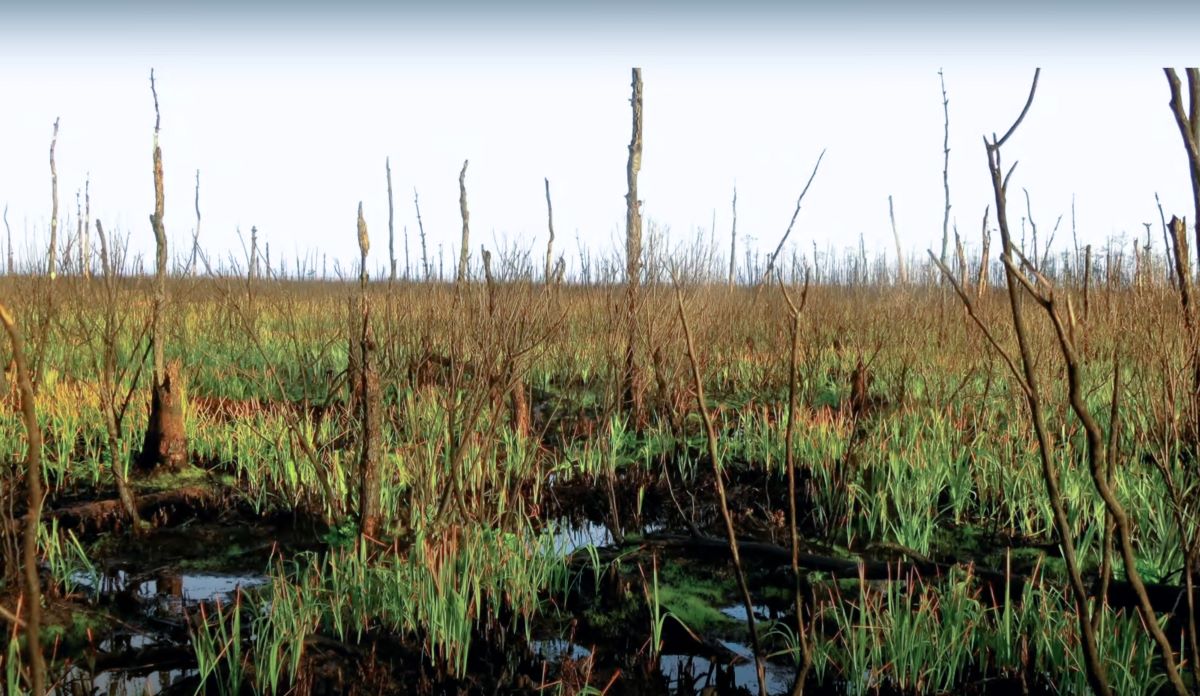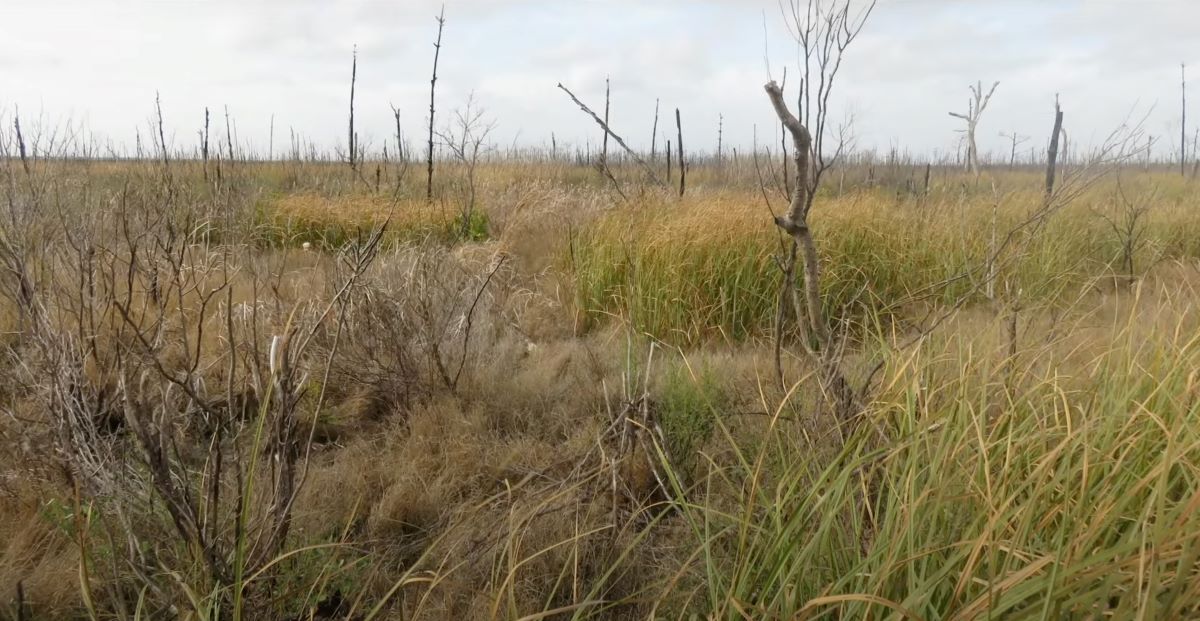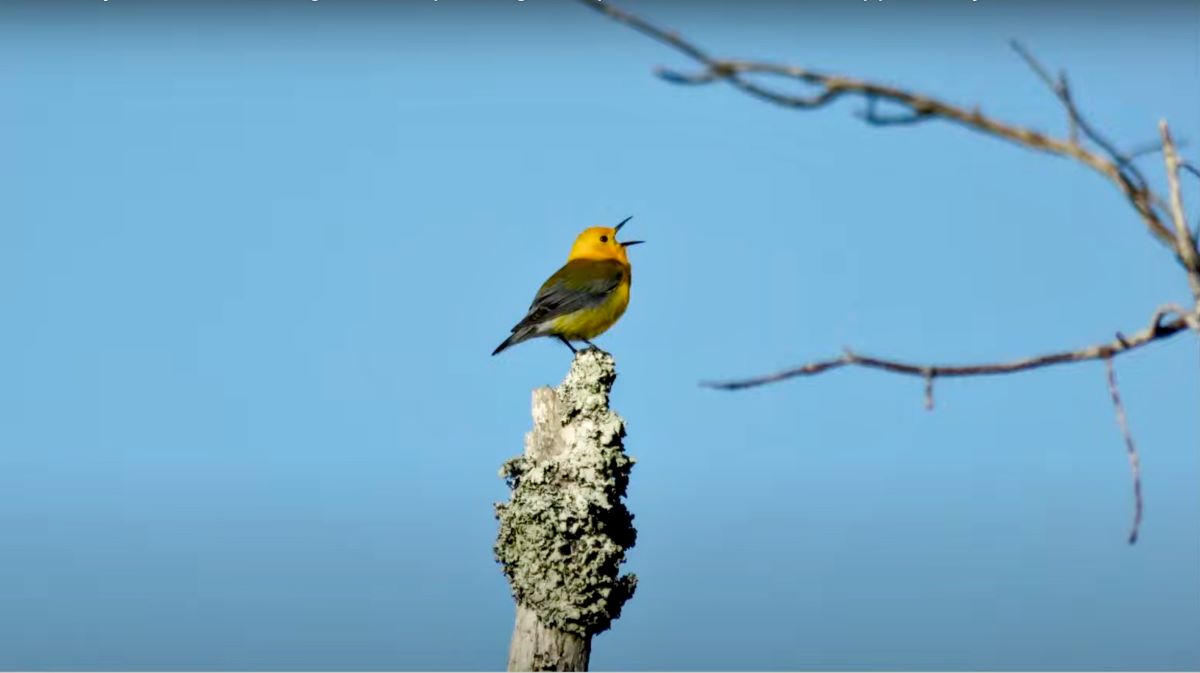
There is a grippingly real sense of dread that some people feel about the state of the environment.
That’s what Dr. Paul Taillie, assistant professor of geography and the environment at the University of North Carolina Chapel Hill, told an audience last week during the most recent “Science on the Sound” monthly lecture series hosted by Coastal Studies Institute at the East Carolina University Outer Banks Campus.
Supporter Spotlight
“This is a documented term called ‘climate anxiety,’ where this state of the Earth these days is causing people to be anxious,” he said. “It’s hard to avoid these dramatic, very worrisome headlines about super hurricanes and death and destruction, historic flooding. This feeling of anxiety is valid (and) I think it’s very justified.”
He delivered his talk, “Coastal Ecosystems and Rising Seas: Impending Collapse or Conservation Opportunity?” Thursday evening, one day before Hurricane Helene brought unheard of rainfall and destruction to Western North Carolina.
Taillie acknowledged that while there is reason for concern about the environment, he does not share the full-on anxiety others may experience. “I tend to be very optimistic about things.”

There were reasons for his optimism, he explained, adding he hoped attendees left the evening’s discussion with “more of a sense of optimism about climate change and biodiversity than when you came in the room.”
Taillie pointed out that all systems evolve and change over time and that the plants and animals living in those systems adjust to the changes and have been “for a really long time, hundreds of thousands of years.”
Supporter Spotlight
Questions remain about the impact of environmental change on certain species, especially those that are threatened by the changes that are taking place.
Taillie said that when he began his graduate studies, he wanted to look at how species, in general, reacted to environmental changes. One of the difficulties he found in wanting to study the possible benefits of those changes was the reluctance to focus on possible benefits.
“It’s easier to publish a paper about a species going extinct because of climate change than it is to publish a paper about a species benefiting from climate change,” he said. “But that’s been kind of a driving force behind my research.”
Taillie’s first graduate work was to investigate the effects of wildfire on plants and animals, and what he found was that wildfire is, in fact, an important part of the ecosystem.
“I started to notice that there’s all these plants and animals that are uniquely adapted to the conditions created by fire, and that these disturbances that we think of as being really bad can often be really good for biodiversity,” he said.
When he started his doctoral work, he had the chance to study the 2016 Pains Bay Fire in Dare County that burned 15,000 acres in Alligator River National Wildlife Refuge.
“I was super interested to see what happened to this area. As soon as I was allowed to, I went in there,” Taillie continued, showing the audience a picture of burned trees and shrubbery. Just a week later, grass had begun growing among the charred trees.
“These grasses (are) palladium or sawgrass. This is exploding,” he said. “It’s growing superfast and responding to fire very rapidly.”
A year later, he found what was once a forest was completely covered in grasses and fast-growing vegetation.
“This is almost unrecognizable as forest,” Taillie continued. “That fire is catalyzing this transition from forest to marsh.”
Taillie made the point that the grasses that have grown where there was once dense forest are essential for the survival of a number of species.

“These marshes support a lot of really unique animals that hide in these dense grasses,” he explained. “Many birds and small mammals are running around in there. They’re super vulnerable to predation, and so they need this dense grass in order to hide from predators.”
Fire is a relatively spectacular environmental change. The changes that occur in a marsh are more subtle but every bit as dynamic.
“Marshes,” he said, “have these built-in mechanisms of resilience to changes in sea level.”
As sea levels rise, the marsh will often migrate landward, replacing terrestrial systems, especially forest. That movement is apparent in ghost forests, where stands of dead trees immediately adjacent to a live forest.
State and federal agencies, including the North Carolina Wildlife Resources Commission and the U.S. Fish and Wildlife Service, are concerned about these ghost forests. “These were proliferating all over Dare and Hyde counties.”
Taillie continued that he realized while he studied what was happening that “the ghost forest represented a transition from one stage of this transition from forest to marsh. This is not something to stop.”
Bird surveys that were taken of the living forest and ghost forest showed that the ghost forests are an important part of species survival and adaptation.
“We started to notice that there were lots of interesting birds hanging out in the ghost forests, much different than in the live forest. One of those is a prothonotary warbler,” he said.

A highly migratory species, the prothonotary warbler is described by the Cornell University All About Birds website as “a species of high conservation concern.”
The birds prefer nesting sites in standing dead trees over shallow water, a condition that Taillie described as “the exact sort of conditions that you find in those forests.”
He said his work has taken him from the marsh and barrier islands of coastal North Carolina to the Florida Keys, where he has been studying the ability of a subspecies of marsh rice rats to adapt and survive in their environment.
“Everyone always wants to know, well, if all the Keys were underwater, where did they go? I don’t know,” he said and pointed out that, “They have dealt with hurricanes for a very long time.”
There are, he pointed out, a number of similarities between North Carolina’s barrier islands and the Florida Keys. Both are subject, as an example, to periodic flooding, and it was the flooding that brought the silver rice rat to Taillie’s attention in 2017.
At the time, he was working with the Fish and Wildlife Service following Hurricane Irma. The agency was concerned that because of storm surge, “this entire endangered species could be no longer in existence.”
It quickly became apparent that the silver rice rat population was holding its own, even though the storm surge of 2 to 3 feet should have inundated the Keys where the rats lived.
How they survived is a mystery, Taillie said.








